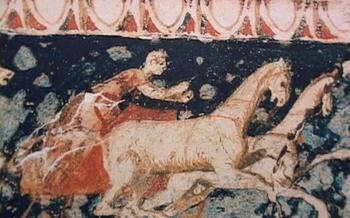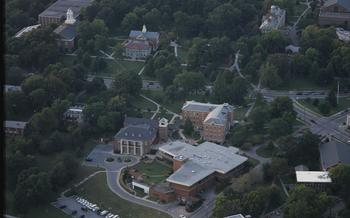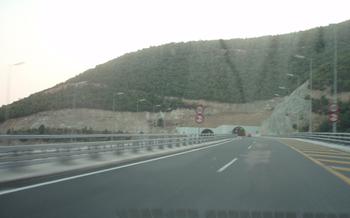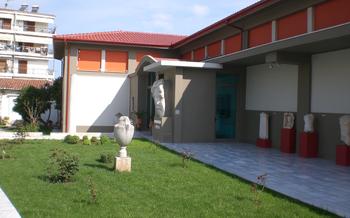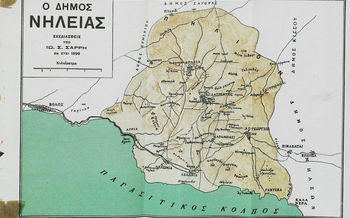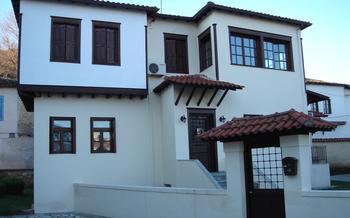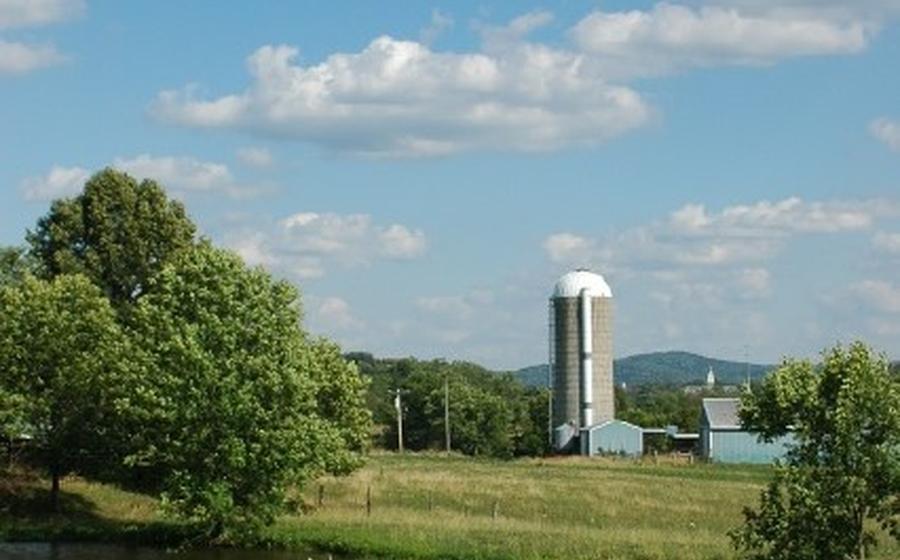
Traditional Settlement of Kastania
- Historical Background
- Unique Architecture
- Church of Agios Nikolaos
- Folklore Museum
- Traditional Crafts
- Natural Beauty
- Festivals and Celebrations
- Local Cuisine
- Accommodation Options
- Getting There
- Things to Do Nearby
- Challenges for Visitors
- Safety Tips for a Hassle-free Experience in Kastania
- Insider Tip: The Secret Path
Historical Background
In the heart of Greece's enchanting Veria region lies the captivating traditional settlement of Kastania, a village with a rich and storied past that dates back to the era of Alexander the Great. Once a strategic military outpost, Kastania played a crucial role in the Macedonian kingdom's defense. Its close proximity to the Via Egnatia, the ancient Roman road connecting East and West, further enhanced its importance as a trading hub. Over the centuries, Kastania has witnessed the rise and fall of empires, leaving behind a legacy of historical treasures that beckon visitors to delve into its fascinating past.
Unique Architecture
Kastania is renowned for its unique and well-preserved traditional Macedonian architecture. The village is adorned with charming stone-built houses, each with its own distinct character. These houses feature thick stone walls, wooden balconies, and intricately carved doorways. The narrow cobbled streets, lined with these traditional structures, create a picturesque and authentic atmosphere that transports visitors back in time. Exploring the village on foot allows one to appreciate the architectural details and immerse oneself in the charm of Kastania's built heritage.
Church of Agios Nikolaos
Among the most prominent landmarks in Kastania, the Church of Agios Nikolaos stands as a testament to the village's rich religious heritage. Constructed in the 19th century, the church boasts an impressive architectural style that harmoniously blends traditional Macedonian elements with Byzantine influences. Its stone-built exterior exudes a sense of grandeur, while the intricate frescoes adorning the interior walls depict biblical scenes and narrate the life of Saint Nicholas, the patron saint of sailors and travelers.
The church holds immense historical significance for the people of Kastania, serving as a spiritual and communal center throughout the centuries. It was here that locals gathered for religious ceremonies, celebrated festivals, and sought solace in times of need. The church's well-preserved condition bears witness to the devotion and care with which it has been maintained by generations of villagers.
Notable features of the Church of Agios Nikolaos include its impressive bell tower, which rises above the village, offering panoramic views of the surrounding landscape. The interior of the church is adorned with exquisite wood carvings and intricate iconography, creating a sacred and awe-inspiring atmosphere. Visitors are invited to explore this architectural gem and delve into the religious and cultural traditions that have shaped the identity of Kastania.
Folklore Museum
The Folklore Museum in Kastania offers a fascinating glimpse into the everyday life and traditions of this charming village. Housed in a beautifully restored traditional Macedonian house, the museum showcases an impressive collection of authentic artifacts and exhibits that tell the story of Kastania's rich cultural heritage.
Visitors can explore a diverse range of exhibits that highlight the local costumes, household items, and tools used by the villagers in the past. The museum's collection includes intricate hand-woven textiles, traditional clothing, and a variety of agricultural tools that provide insights into the daily lives of the villagers.
One of the highlights of the museum is the display of traditional costumes, which showcase the exquisite craftsmanship and vibrant colors of the local dress. Visitors can admire the intricate embroidery and unique designs that reflect the artistry and cultural influences of the region.
The Folklore Museum is a delightful and educational experience that allows visitors to connect with the history and traditions of Kastania. It offers a unique opportunity to learn about the village's past and gain a deeper understanding of the local culture.
Traditional Crafts
Kastania is home to a thriving community of local artisans who keep traditional crafts alive. Woodcarving is a specialty of the village, and you can find intricate carvings depicting scenes from Greek mythology or everyday life. Pottery is another popular craft, and you can find beautiful hand-painted ceramics in the local shops. Hand-woven textiles are also produced in the village, using traditional techniques that have been passed down through generations. These textiles are often used to make colorful rugs, blankets, and other home décor items.
If you're interested in learning more about the traditional crafts of Kastania, be sure to visit the Folklore Museum. The museum has a collection of exhibits that showcase the different crafts practiced in the village, as well as demonstrations of how these crafts are made. You can also find traditional crafts for sale in the village shops and at the local market. Whether you're looking for a unique souvenir or simply want to appreciate the skill and artistry of the local artisans, Kastania is a great place to find traditional Greek crafts.
Natural Beauty
Kastania is nestled amidst breathtaking mountain landscapes, offering stunning views that will leave you in awe. Surrounded by lush forests and vibrant greenery, the village is a paradise for nature lovers, inviting them to explore its serene trails and immerse themselves in the tranquility of the natural surroundings. The village's elevated location provides panoramic vistas that stretch for miles, showcasing the majestic peaks of the Pieria Mountains and the vast expanse of the Aegean Sea in the distance. Whether you prefer invigorating hikes through the verdant forests or leisurely nature walks along winding paths, Kastania's natural beauty provides an idyllic backdrop for outdoor enthusiasts seeking rejuvenation and tranquility.
Festivals and Celebrations
Kastania's rich cultural heritage is brought to life during its annual events and festivals. These celebrations offer a glimpse into the village's customs and traditions, providing an opportunity to interact with the locals and experience their warm hospitality firsthand.
The most notable event is the Kastania Festival, held every summer. This vibrant festival showcases traditional music, dance, and local delicacies. Visitors can enjoy live performances, participate in traditional games, and indulge in culinary delights prepared by the village's talented cooks.
Other notable celebrations include religious festivals such as Easter and Christmas, which are observed with great devotion and enthusiasm. During these times, the village's churches are adorned with intricate decorations, and special services are held to honor the patron saints.
Attending these festivals and events is a fantastic way to immerse yourself in Kastania's rich cultural tapestry and connect with the local community. Embrace the opportunity to learn about their customs, traditions, and way of life, creating memories that will last a lifetime.
Local Cuisine
Traditional Greek dishes
The culinary delights of Kastania are a true reflection of traditional Greek cuisine. The village is renowned for its fresh, locally sourced ingredients, which are used to create authentic dishes that have been passed down through generations.
Use of fresh, local ingredients
The use of fresh, local ingredients is a hallmark of Kastanian cuisine. From the succulent tomatoes and crisp cucumbers that are grown in the village's gardens to the aromatic herbs that are picked from the surrounding hills, each ingredient contributes to the unique flavor and quality of the dishes.
Must-try specialties
Among the must-try specialties of Kastania is the prasinopita, a savory pie filled with wild greens, feta cheese, and eggs. Another local delicacy is the gemista, which consists of tomatoes, peppers, and eggplants stuffed with rice and herbs. For those with a sweet tooth, the kataifi, a crispy filo pastry filled with chopped nuts and drizzled with honey, is an absolute must.
Accommodation Options
Kastania offers a range of accommodation options to suit different budgets and preferences. Traditional guesthouses and small hotels provide a charming and authentic experience, with cozy rooms and warm hospitality. These accommodations often feature traditional décor and may offer stunning views of the surrounding mountains.
For those seeking a more luxurious stay, there are also a few boutique hotels in the area that offer modern amenities and upscale accommodations. These hotels typically have swimming pools, spas, and gourmet restaurants, providing a relaxing and rejuvenating experience.
To find the best deals on accommodation, it's advisable to book in advance, especially during the peak tourist season. Online booking platforms and travel agents can be a convenient way to compare prices and amenities and secure the best rates.
It's also worth noting that some guesthouses and hotels in Kastania may not have English-speaking staff, so it's helpful to learn a few basic Greek phrases or have a translation app handy.
Getting There
Veria is well-connected to major cities in Greece. The closest airport is Thessaloniki International Airport (SKG), located about 45 kilometers away. From the airport, you can take a bus or taxi to Veria. The journey takes approximately 45 minutes.
Alternatively, you can reach Veria by train from Athens or Thessaloniki. The train journey from Athens takes about 5 hours, while the journey from Thessaloniki takes about 2 hours.
Kastania is located about 10 kilometers from Veria. You can reach the village by taking a local bus or taxi. The bus journey takes about 15 minutes, while the taxi journey takes about 10 minutes.
The best time to visit Kastania is during the spring (April-May) or autumn (September-October) when the weather is mild and pleasant. In summer, the weather can be quite hot, while in winter, it can be cold and snowy.
Here is a suggested itinerary for a day trip to Kastania from Thessaloniki:
- Take a morning train or bus from Thessaloniki to Veria.
- Upon arrival in Veria, take a local bus or taxi to Kastania.
- Spend the morning exploring the village, visiting the Church of Agios Nikolaos, the Folklore Museum, and the various traditional craft shops.
- Have lunch at one of the local tavernas in the village.
- In the afternoon, take a hike in the surrounding mountains or visit one of the nearby attractions, such as the Vergina Royal Tombs.
- Return to Veria in the evening and take a train or bus back to Thessaloniki.
Things to Do Nearby
In addition to exploring the charming village of Kastania, there are several other attractions worth visiting in the surrounding area. For history buffs, the ancient city of Vergina, located just a short drive away, is a must-visit. Home to the tomb of Alexander the Great and other Macedonian kings, Vergina offers a glimpse into the rich history of the region.
Nature lovers will delight in the stunning landscapes of Mount Vermio, which offers a variety of hiking trails and outdoor activities. The mountain is home to a diverse range of flora and fauna, including ancient forests, wildflowers, and a variety of bird species.
For those seeking a more relaxed experience, the nearby village of Nymfaio is a picturesque mountain resort town known for its traditional architecture, charming cafes, and stunning views of the surrounding countryside.
To make the most of your visit to Kastania and the surrounding area, consider planning a day trip or excursion to these nearby destinations. Whether you're interested in history, nature, or simply soaking up the local culture, there's something for everyone to enjoy in this beautiful region of Greece.
Challenges for Visitors
Visiting Kastania, like any foreign destination, presents certain challenges that tourists should be aware of. The most common obstacle is the language barrier. While some locals may speak basic English, Greek is the primary language spoken in the village. To navigate effectively, it's helpful to learn a few essential Greek phrases or consider hiring a translator or guide.
Kastania's limited tourist infrastructure is another potential challenge. Being a traditional settlement, it may not have the same level of amenities and services as more developed tourist destinations. Accommodation options, for example, might be limited, and some restaurants may only offer traditional Greek cuisine. It's advisable to research and book accommodations in advance and be open to trying local dishes.
Despite these challenges, Kastania offers an authentic and immersive experience for those willing to embrace its unique charm. By being prepared, respectful, and open-minded, visitors can overcome any obstacles and fully enjoy their time in this captivating village.
Safety Tips for a Hassle-free Experience in Kastania
Visiting Kastania is generally safe, but like any travel destination, it's crucial to be aware of potential risks and take necessary precautions to ensure a smooth and enjoyable trip. Here are some safety tips to keep in mind: - Be Wary of Pickpockets: Tourist hotspots, like the main square or crowded streets, can attract pickpockets. Keep your valuables, such as wallets and phones, close to you and avoid carrying large amounts of cash. - Stay Alert: While the crime rate is low, petty theft can occur, especially during the summer months when the village is bustling with tourists. Be mindful of your surroundings and keep an eye on your belongings. - Respect Local Customs: Remember that Kastania is a traditional village with strong cultural and religious values. Respect local customs and dress modestly when visiting religious sites or attending local events. - Avoid Isolated Areas at Night: Like in any unfamiliar place, it's best to avoid walking alone in secluded areas, especially at night. Stick to well-lit streets and paths, and if you're unsure, ask a local for directions. - Learn Basic Greek Phrases: Learning a few basic Greek phrases like "hello," "thank you," and "goodbye" can go a long way in showing respect to the locals and making them more receptive to helping you.
Insider Tip: The Secret Path
Beyond the charm of its cobbled streets and traditional houses, Kastania hides a secret path that leads to a breathtaking viewpoint overlooking the village and the surrounding mountains. To find this hidden gem, follow the small trail that starts from the Folklore Museum and winds its way through lush greenery. As you ascend, the views become increasingly panoramic, offering a unique perspective of Kastania's picturesque landscape. Find a spot to rest and indulge in the tranquility of the surroundings, taking in the beauty of the village nestled amidst a stunning natural backdrop. Embrace the serenity of this secret spot as you soak up the panoramic views, creating a lasting memory of your visit to Kastania.
